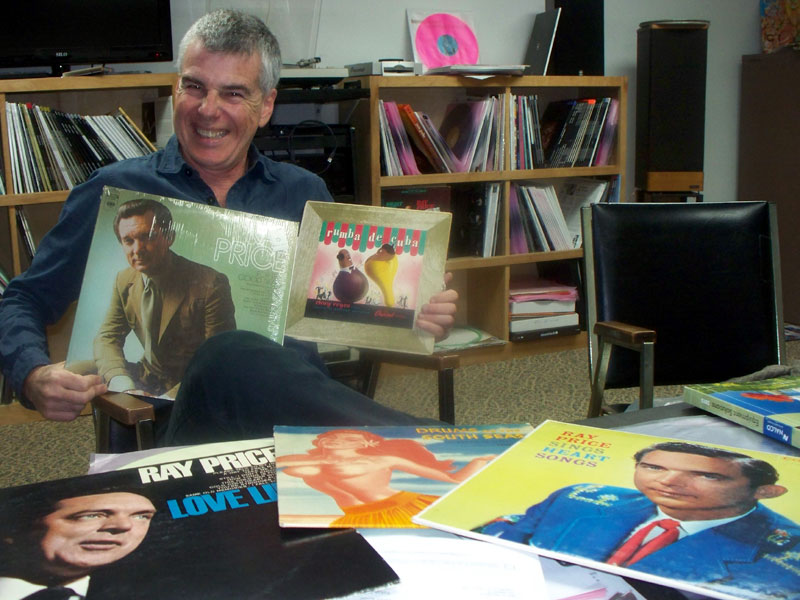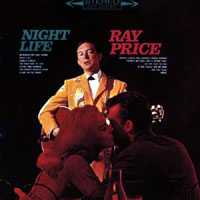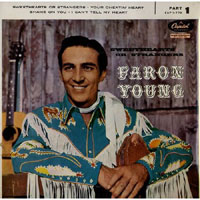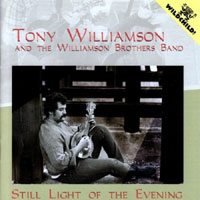Mr. Record Goes on the Record About Audio Shows
remember my first hi-fi show with great fondness. The year was 1978, and the show was an incredible experience. I was fresh out of high school and it was the first time I recall noticing inner detail, extended and tight bass, and wide dynamic range, all coming from the same system. I was used blazing dynamics from my dad’s Altecs, but I heard systems at my first show that could do this without the colorations of the horns. I also remember hearing the now-forgotten amp-destroying drum solo from the Charlie Byrd direct-to-disc LP on Crystal Clear Records. Any recording that dynamic deserved a place in my collection -- I think I have four copies. Whether I could I play the record or not was of little concern. I knew I would be able to eventually. The goal for me was finding equipment capable of that kind of musical reproduction -- not a pair of dynamically challenged Quads. Two channels were all anybody cared about, and all the design effort was put into them. Contrary to the much of the teaching of the press today, I didn’t view that equipment as harsh, grainy, transistory, boxy, or having a high noise floor. What I heard rivaled the best of today’s gear, and a decent portion of it sounded better than what I hear at audio shows today. Sorry, but 3-watt amps, Edgarhorns, and honky Lowthers are not my idea of progress. At my first show, almost everything I heard impressed me, although I do remember not being impressed by the large Acoustats driven by their built-in tube amps. I saw but did not hear the Hill Plasmatronic speaker; a malfunction prevented that experience. My reaction to the helium tanks was the same as the reaction I had a few years later to the noisy aquarium pumps needed to operate the Eminent Technology tonearm. The only difference was that I heard the ET 'arm. Big soundstage? Not to my ears. What I heard was sloppy bass and a midrange that sounded like Jell-O.
Ray Price always brings a big smile to Mr. Record's face. So where is the real progress in audio? Moving-coil cartridges are no longer dry and bright and tube preamps are a lot quieter, but large-panel/full-range electrostats still sound as weird as ever to me. You can finally buy tube amps that are as reliable as the old McIntosh and Marantz amps, and speaker wire went from a party joke to a reality. One thing is for sure, demo music has gone downhill since the 1970s. Digital reverb was in its infancy in 1978, so people tended to play direct-to-disc LPs. Most of them were pretty weak musically, but the better Sheffield, M&K, and Crystal Clear records did have excellent sound. Telarc was the new kid on the block, and everybody was impressed, myself included, with the bass on the Frederick Fennell Cleveland Winds LPs. When I started shopping at garage sales a few years later, I discovered that almost any high-school band record sounded even better. Bass isn’t everything. My next hi-fi show was in 1987 -- the first of the Stereophile shows. By then I had a group of audiophile friends and we attended the show together. I remember hearing good if not great sound in most of the rooms. Reverb-soaked female vocals were still a few years away, so good source material was still in use. One thing I avoided -- and still do -- is wimpy baroque LPs. Following this show, I can’t remember exactly why I didn’t attend any shows until Cisco Music hired me in 1998. During the '80s my closest audiophile friend, Victor, had become one of those young professionals who attended CES to get good deals. That never appealed to me. Looking back, had I been socially a little more outgoing, I might have landed a job in the audio industry a bit sooner, but I probably would have burned out before Cisco came along. Some things are just meant to be. My ten years with Cisco gave me free access to CES, but CES also meant work. However, I made friends as a result. I also had the chance to meet some of the the audio press, like Michael Fremer, Jonathan Valin, Paul Seydor, Art Dudley, and finally in 2008, Harry Pearson. I never had the opportunity to meet J. Gordon Holt, but I got to see him sitting with his famous cigarette and martini. My impression of Holt was that he wasn’t much into meeting people, but I love the way he wrote about audio and music. Working for an audiophile music company and going to high-end shows is like seeing a film from behind the scenes. My most recent show was THE Show held this past spring in Newport Beach. Audio shows in Southern California are important to the business, and the business has become very important to me. Being able to hand a bag to a reviewer is far more rewarding than handing a box to the UPS driver. I hope THE Show continues in Southern California. I had a great time despite the female vocals played everywhere, and I managed to find a few rooms with good sound and even a couple with a good selection of vinyl. I found a mint American Decca copy of pianist Shura Cherkassky’s recording of Tchakovsky’s Second Concerto [Decca DL 9916] at the Newport Show. I have another copy, but I haven’t been able to find it in five years, so for $10 I now have a perfect copy. And, yes, it sounds wonderful. I have come to love audio shows because they take me away from my desk. When working a show, my feet are killing me by the third day and my energy is zapped, but it beats sitting in front of a computer and answering phones. I still get a thrill from some of the equipment, especially if it uses tubes, but I won’t enter a room where the music sounds like evaporating dry ice. If the sound sucks in the hallway, it’s not going to get any better by walking into the room. Passing a room with bad sound or slimy music is easy. Do I really need more brochures? A live piano sounds like a live piano even if the door is shut, so an audio system should at least sound inviting before you walk into the room, right? Now, before you misinterpret my ongoing disdain for female vocals, let me explain that I do not have a beef with female singers. My LP collection is stuffed with them. Many women have sung through my speakers, and so has Erica Morini’s violin. There aren’t many things better than Morini’s Brahms and Tchaikovsky concerti on Westminster. Hey, I dig the ladies, but not Diana Krall and Patricia Barber. As I said before, recordings drenched in digital reverb have no business being used to demo high-end gear, unless you’re trying to hide something. I am not at all impressed with recordings made by audiophiles for audiophiles, either. Standing in line for 20 minutes to hear back-of-the hall sound is not for me. Revolutionary microphone placement is a joke if the result is another cheap-seat recording. Enough of that. It’s time for some cool records and even a CD or two. Beethoven: Quartet In G major (#2) and Quartet In D Major (#3), Kroll Quartet [Allegro AL 78] Most string quartets bore me. In fact, most chamber music bores me. But for reasons I am not able to explain, some chamber works grab and thrill me. My interest in chamber music is quite recent. Rock'n'roll kept me away. What I find very interesting is that two of my record collecting/audio friends who also never paid any attention to chamber music are also getting into it, and we never even talked about it amongst us. It must be due to our gray hair. I have grown to love Beethoven’s Second Quartet. I used to have all the early quartets by the Budapest Quartet on Columbia. I used to jokingly say that the beautiful textured jackets looked classy on my shelf -- and they did. I finally got rid of them when I realized that no improvement in my audio system was ever going to make them sound good. I also could never warm up to the Budapest performances. When I found this Allegro LP back in 1985, it was the sound that impressed me and it was the sound that made me keep it. Over the years I kept on returning to this LP and one day I realized that I was in love with the music. I don’t know much about the old Allegro label, but I do know now that these are incredible performances in incredible sound. It's upfront, very dynamic, and tonally spot-on. The Kroll Quartet plays with a pizzazz rarely heard on commercial recordings, except those wonderful Hollywood String Quartet LPs on Capitol. This early-'50s mono recording makes almost every stereo recording of chamber music sound bad. It’s so good that it makes me wonder if it’s even possible to record a string quartet in stereo as well today. Stereo would mean one more microphone preamp and one more tape channel, so maybe mono is even better than we think. What made me pull this LP off the shelf a couple of months ago was the recent purchase (at a thrift shop, no less) of some Villa-Lobos quartets on a Dorian CD. I don’t know much about the now-defunct Dorian label, outside of some praise in the audio press, but a comparison with the Allegro LP is instructive. The Dorian is the complete opposite. It hits you in the face, not with the music, but with gobs of indirect cold ambience. A fog of echo covers up any chance of your ever believing that it is anything more than a recording. The Dorian is a "purist" recording using nothing but the best digital recording equipment and the best (whatever "best" means) condenser mics, cables, etc. The Allegro was recorded on full-track 1/4" analog tape, and because of the time it was recorded the single microphone was probably an RCA ribbon or an Electrovoice dynamic. Need I say more? Ray Price: Nightlife [Columbia CS 8771/Koch CD-7928]
I can’t speak for the sound of the LP, since I’ve never found a copy that wasn’t trashed, but the Koch CD sounds fantastic. They did nothing but an honest flat (meaning no EQ) transfer of the master tape. That’s what a good recording deserves, and this is a great-sounding CD. Faron Young: Sweethearts or Strangers [Capitol TT778]
Tammy Wynette: Bedtime Story [Epic 31285] I love Tammy Wynette. I can’t think of any white female singer who poured more teardrops into a song. Kitty Wells had the lady-next-door voice that I also love, but Wynette was country music’s Billie Holiday, with even better pipes. Bedtime Story came out in 1972, and it’s one of Wynette's three best albums. It’s a great introduction to country music’s greatest lady of song. Vocally, it’s Tammy at her very best and that alone makes it essential listening -- and it sounds incredible too. If "Just As Soon As I Get Over You" doesn’t nail you to the wall, you’re simply not worthy of a turntable. Tony Williamson and the Williamson Brothers Band: Still Light of the Evening [Wildchild 08952]
The singing and playing are spontaneous and intoxicating in their soulfulness. Nobody sounds like they have a clothespin on their nose either. In fact, I can’t say I’ve heard this kind of "back porch" soul since I discovered the first Elektra recordings by the Dillards. Musically the Williams band exceeds the very high standard set by the Dillards, whose famous breakneck speed could sometimes sound like a cover up for a lack of musical understanding. On the other hand, I’m sure it was also a response to the overtly "down home" sound of Flatt and Scruggs. Williamson doesn’t have to prove anything. According to the liner notes, he’s been making this kind of music for forty years, and he’s clearly not tired. I love his purity. This is not the crossover bluegrass that most audiophiles have heard. On the other hand, it’s also not a recording made by Grandpa Paul and Uncle Milt, who put on their clean overalls and drove to the city to make a record. (I have a few LPs of that sort of thing. They have their charm, but the charm wears off fast.) I love the way this CD was recorded. Obviously there is a
lot to what makes Sprey’s recordings sound the way they do. I applaud his use of a
Sony 880 deck, as it’s one of the finest reel-to-reel decks ever made, but what
impresses me most is his use of Crown pressure zone microphones (PZMs). I remember when
they first hit the market. Crown was promoting PZMs as better way to record music. New and
better are rarely better in my book, and my very limited experiments with PZMs showed that
can sound very interesting, but not better. "Interesting" is a good word to
describe everything Sprey has recorded. As with a Rudy Van Gelder recording, I can
recognize a Sprey recording before I enter the room. They have a lot going for them, but
unlike with other purists, his stuff really does sound pure. And his fabulously mastered
CDs are a prime example of just how good the old-fashioned format can sound when it’s
left alone to do what it really can do. Sprey’s recordings make a good case for
analog as a superior storage medium, especially for small-ensemble string music. While I
may question his exclusive use of PZMs, I do not feel that the CD format is limiting my
ability to hear his engineering. These mics are simply not the best way to capture all
musical instruments, but the Tony Williams CD sets an extremely high standard for
bluegrass sound. Sprey could easily make a good case for using such mics for all bluegrass
recordings in the future. |


 Few albums have moved me
more than this one. It’s not just one of the greatest country albums ever recorded,
it’s one of the greatest albums of any kind ever recorded. There is not a single weak
cut. That in itself is a rarity among country records. The combination of Price’s
Jack Daniels-tinged baritone, Willie Nelson’s powerful lyrics, and the bluesiest
steel guitar work ever recorded, courtesy of Buddy Emmons, is just the tip of the iceberg.
Some of the gripping cuts include a realization of Charlie Rich’s "Sittin’
and Thinkin'" and a Nelson classic, "Are You Sure." The version of
"Lonely Street" is a nice contrast to the equally fine original by Andy
Williams. (Williams' Cadence recordings bear no resemblance to his later work on
Columbia.) This is extremely powerful music, not to be taken lightly.
Few albums have moved me
more than this one. It’s not just one of the greatest country albums ever recorded,
it’s one of the greatest albums of any kind ever recorded. There is not a single weak
cut. That in itself is a rarity among country records. The combination of Price’s
Jack Daniels-tinged baritone, Willie Nelson’s powerful lyrics, and the bluesiest
steel guitar work ever recorded, courtesy of Buddy Emmons, is just the tip of the iceberg.
Some of the gripping cuts include a realization of Charlie Rich’s "Sittin’
and Thinkin'" and a Nelson classic, "Are You Sure." The version of
"Lonely Street" is a nice contrast to the equally fine original by Andy
Williams. (Williams' Cadence recordings bear no resemblance to his later work on
Columbia.) This is extremely powerful music, not to be taken lightly. Here’s another classic
journey back to a Nashville studio circa 1957. Country music wasn’t exactly
rock'n'roll, but it certainly was close. Like Ray Price's, there is no voice like the
Singing Sheriff's, and this is his first LP as well. It’s all about the voice when it
comes to Faron Young. While Young and everybody else could never cut a cohesive country LP
like Ray Price, the high points sparkle just as brightly. Young’s version of Hank
Williams' "Your Cheatin’ Heart" is worth the entire LP, but then there is
his equally fine version of Spade Cooley’s "Shame On You." The other night
when I was playing this I could not stop thinking, "How does a person learn to sing
this well?" Voices like this are God’s gift to us. Don’t pass them by.
Here’s another classic
journey back to a Nashville studio circa 1957. Country music wasn’t exactly
rock'n'roll, but it certainly was close. Like Ray Price's, there is no voice like the
Singing Sheriff's, and this is his first LP as well. It’s all about the voice when it
comes to Faron Young. While Young and everybody else could never cut a cohesive country LP
like Ray Price, the high points sparkle just as brightly. Young’s version of Hank
Williams' "Your Cheatin’ Heart" is worth the entire LP, but then there is
his equally fine version of Spade Cooley’s "Shame On You." The other night
when I was playing this I could not stop thinking, "How does a person learn to sing
this well?" Voices like this are God’s gift to us. Don’t pass them by. Let me start off by saying
that I’m pretty damn crazy about this CD. This is bluegrass the way I like it, and I
am a huge bluegrass fan. I also love the way this CD was recorded. Having just berated
hey-look-at-me audiophile engineers for acting like they know how to record music better
than anybody in the last 60 years has, I have to say that Pierre Sprey has succeeded where
his competition has failed. I could also go on and on about this music, but I’d
rather sum it up by saying that it’s miles ahead of every modern recording of
bluegrass on the market, both musically and sonically. There is a level of authenticity
that I’ve not heard from anybody else in recorded bluegrass today. Alison Krauss and
Union Station is pop music.
Let me start off by saying
that I’m pretty damn crazy about this CD. This is bluegrass the way I like it, and I
am a huge bluegrass fan. I also love the way this CD was recorded. Having just berated
hey-look-at-me audiophile engineers for acting like they know how to record music better
than anybody in the last 60 years has, I have to say that Pierre Sprey has succeeded where
his competition has failed. I could also go on and on about this music, but I’d
rather sum it up by saying that it’s miles ahead of every modern recording of
bluegrass on the market, both musically and sonically. There is a level of authenticity
that I’ve not heard from anybody else in recorded bluegrass today. Alison Krauss and
Union Station is pop music.